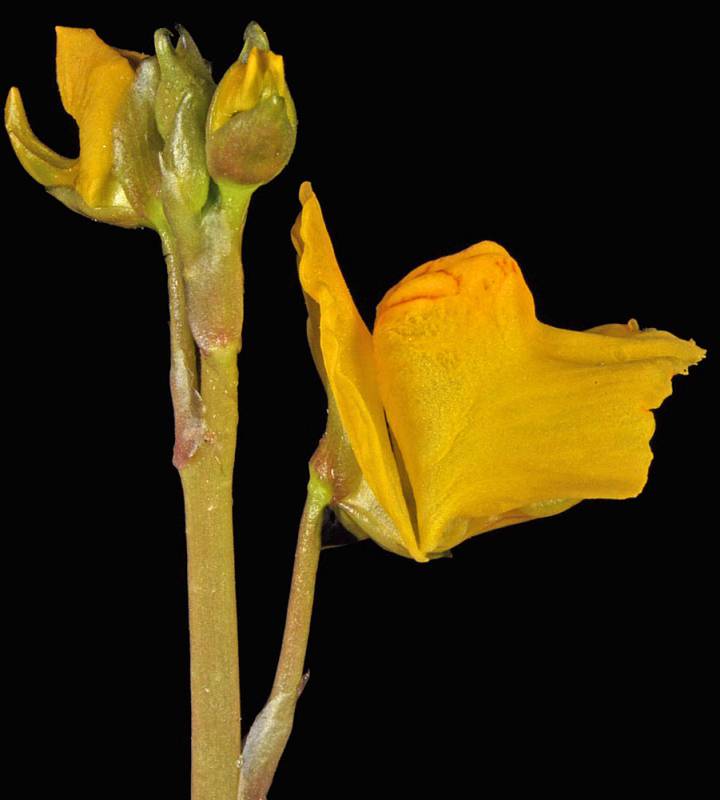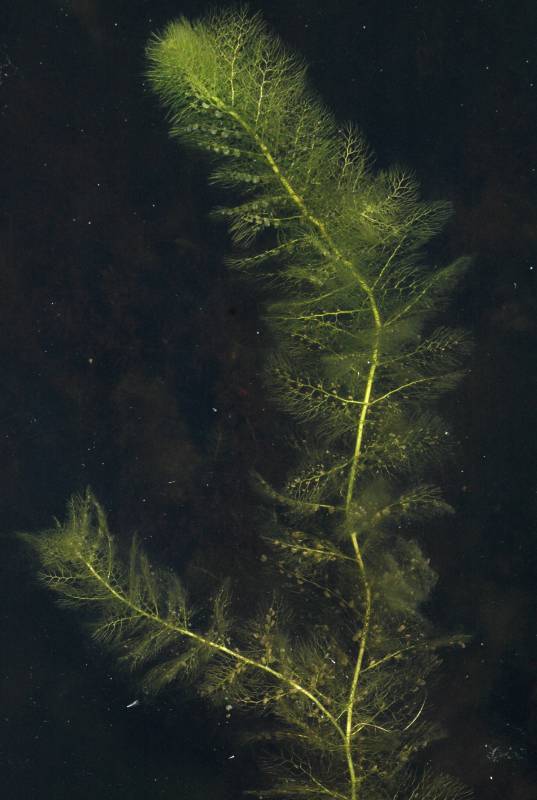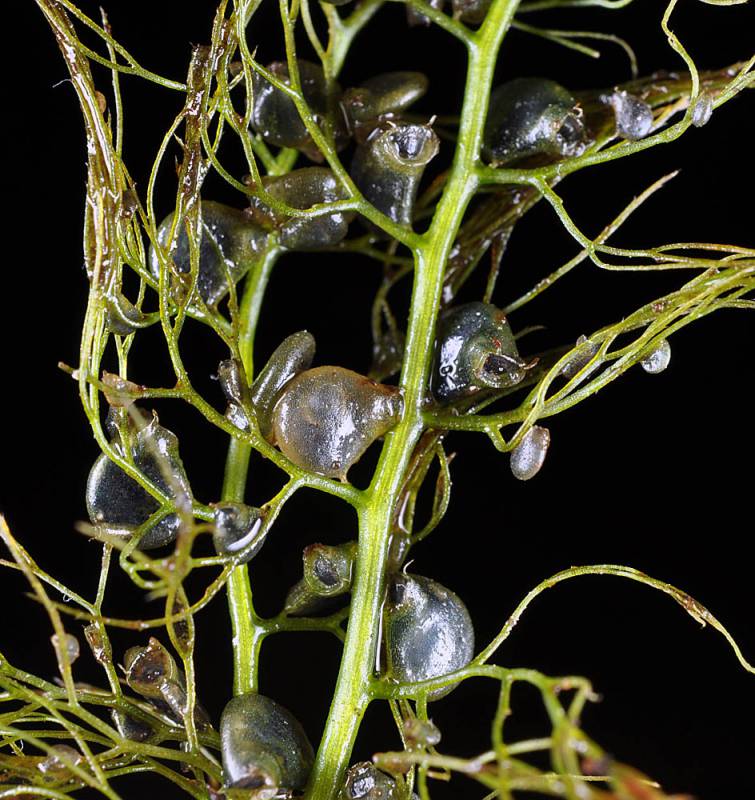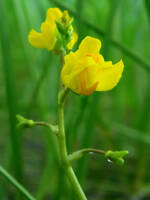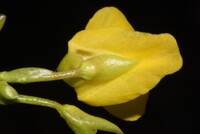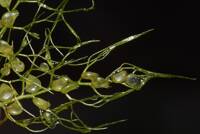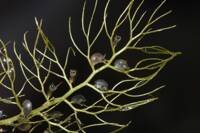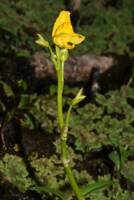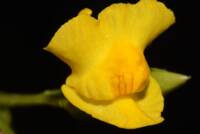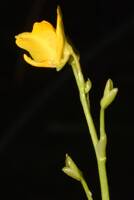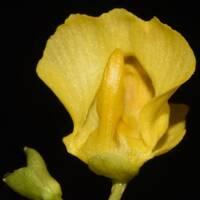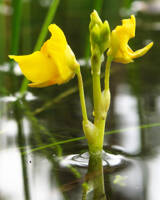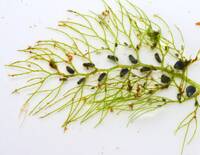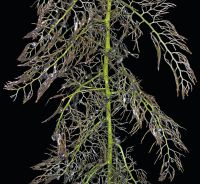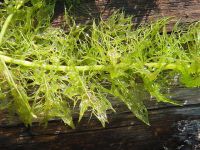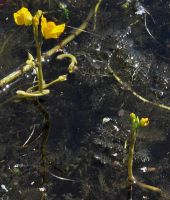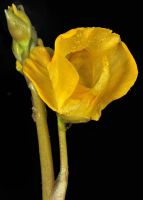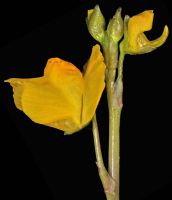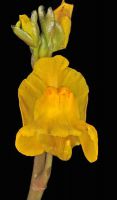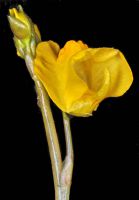Distribution: Occurring on both sides of the Cascades crest in Washington; Alaska to California, east across North America to the Atlantic Coast.
Habitat: Lakes, ponds, swamps, and slow-moving streams.
Flowers: July-September
Origin: Native
Growth Duration: Perennial
Conservation Status: Not of concern
Submersed, free-floating plants, the stems relatively coarse, 1 mm. or more thick
Leaves alternate, numerous, 1-5 cm. long, 2-parted at the base, then repeatedly and unequally dichotomous, the segments terete, progressively more slender, the ultimate ones filiform and acuminate; bladders numerous, borne on the leaves, 1-3 mm. wide.
Flowers 6-20 on a lax raceme at the end of a stout, emergent peduncle 6-20 cm. long; calyx deeply 2-lobed, the lobes entire; corolla bilabiate, yellow, the proper tube very short, the lower lip 1-2 cm. long, broad, slightly lobed, the base raised; upper lip about equal to the lower, shallowly notched; spur well developed, curved forward; stamens 2, ovary superior.
Capsule on a recurved pedicle.
Publication: Cornell Univ. Agric. Exp. Sta. Mem. 291: 9. 1949.
Utricularia vulgaris L. var. americana A. Gray
PNW Herbaria: Specimen records of Utricularia vulgaris ssp. macrorhiza in the Consortium of Pacific Northwest Herbaria database
WA Flora Checklist: Utricularia vulgaris ssp. macrorhiza checklist entry
OregonFlora: Utricularia vulgaris ssp. macrorhiza information
E-Flora BC: Utricularia vulgaris ssp. macrorhiza atlas page
CalPhotos: Utricularia vulgaris ssp. macrorhiza photos

